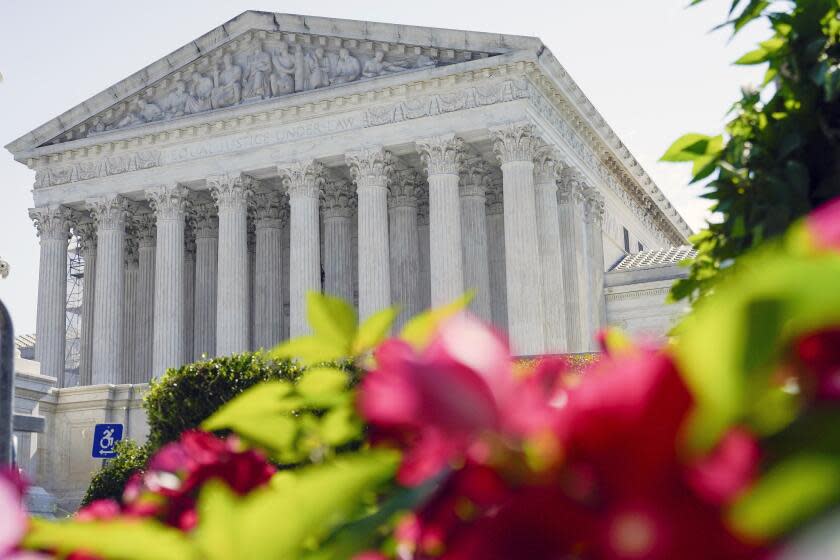Supreme Court upholds new Black-majority district in Louisiana that may elect Democrat to Congress

- Oops!Something went wrong.Please try again later.
The Supreme Court on Wednesday set aside a decision by two Trump-appointed judges in Louisiana and restored a state election map that may allow Black voters to elect a Democrat to Congress this fall.
The justices were acting on emergency appeals from civil rights lawyers as well as Louisiana's Republican leaders. Both supported the newly drawn state map with a second majority-Black district.
About one-third of Louisiana's voters are Black, but five of its six congressional districts had regularly elected white Republicans. The lone Black representative came from New Orleans.
In a separate case last year, the Supreme Court ruled for voting-rights advocates in Alabama and said that state needed to create a second congressional district that may well elect a Black candidate.
Applying that ruling, a federal judge in Baton Rouge said Louisiana also needed to redraw its congressional map to create a second district with a Black majority. The 5th Circuit Court in New Orleans agreed, and the judges said the Louisiana Legislature should draw the new map.
With the backing of newly elected Gov. Jeff Landry, state lawmakers met in a special session in January and drew a map that protected the districts of House Speaker Mike Johnson and Majority Leader Steve Scalise. However, they redrew the district held by Republican Rep. Garret Graves, who had endorsed Landry's opponent in last year's election.
The newly drawn 6th Congressional District stretches from Baton Rouge to Shreveport and has a Black majority. State Sen. Cleo Fields, a Black Democrat who served in Congress in the mid-1990s, said he planned to run in the new district.
But shortly after Landry signed the new map into law, a group of white voters filed suit in Monroe, La., contending they were victims of racial discrimination. They won a 2-1 ruling that declared the new map unconstitutional on April 30.
U.S. District Judges David Joseph and Robert Summerhays, appointees of President Trump, ruled Louisiana's map is an "impermissible racial gerrymander... Accordingly, the State is enjoined from using [the map] in any future elections."
In dissent, 5th Circuit Judge Carl E. Stewart, an appointee of President Clinton, called the decision "jarring" because the state Legislature was under a court order based on the Voting Rights Act that required a new map with a second Black-majority district.
The strange turn of events prompted civil rights advocates and Louisiana's Republicans to file emergency appeals at the Supreme Court.
On May 8, lawyers for the NAACP Legal Defense Fund and the ACLU urged the Supreme Court to overturn the 2-1 ruling that blocked use of the new map.
They were joined two days later by Louisiana Atty. Gen. Elizabeth B. Murrill. She too asked the court to set aside the recent ruling so the map drawn by the Legislature could be used this year.
"Louisiana’s impossible situation in this redistricting cycle would be comical if it were not so serious," she told the court.
This story originally appeared in Los Angeles Times.

